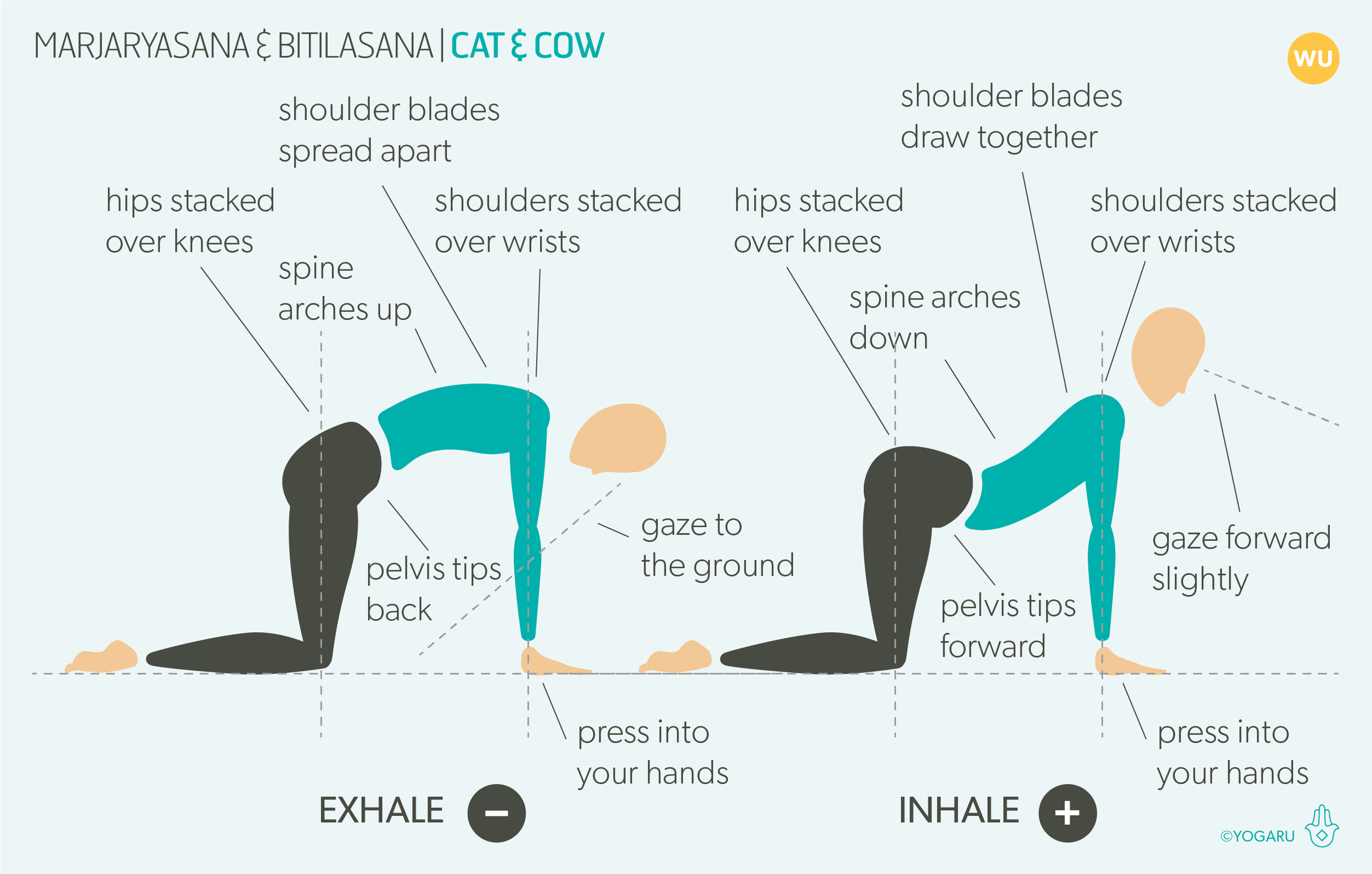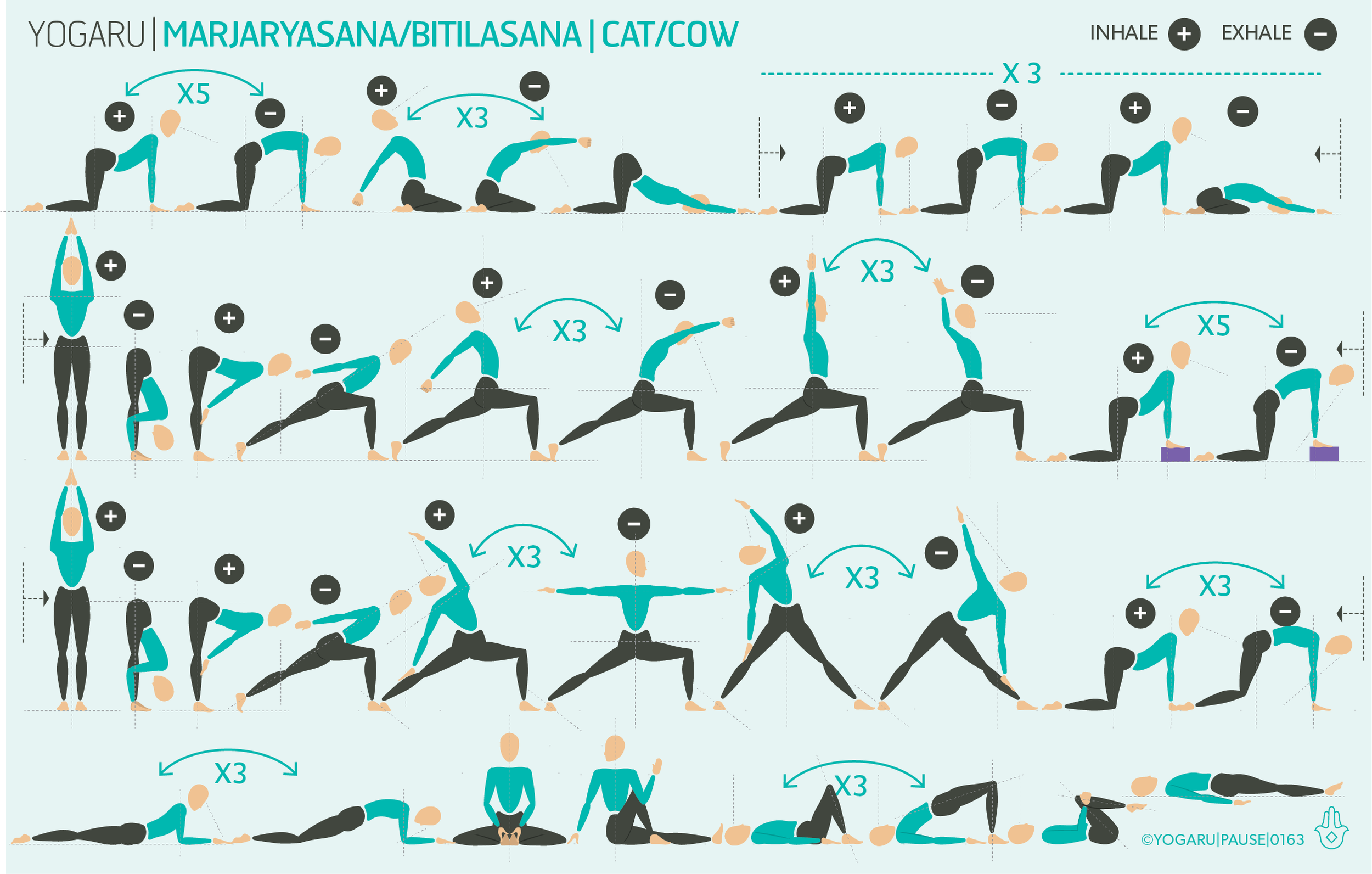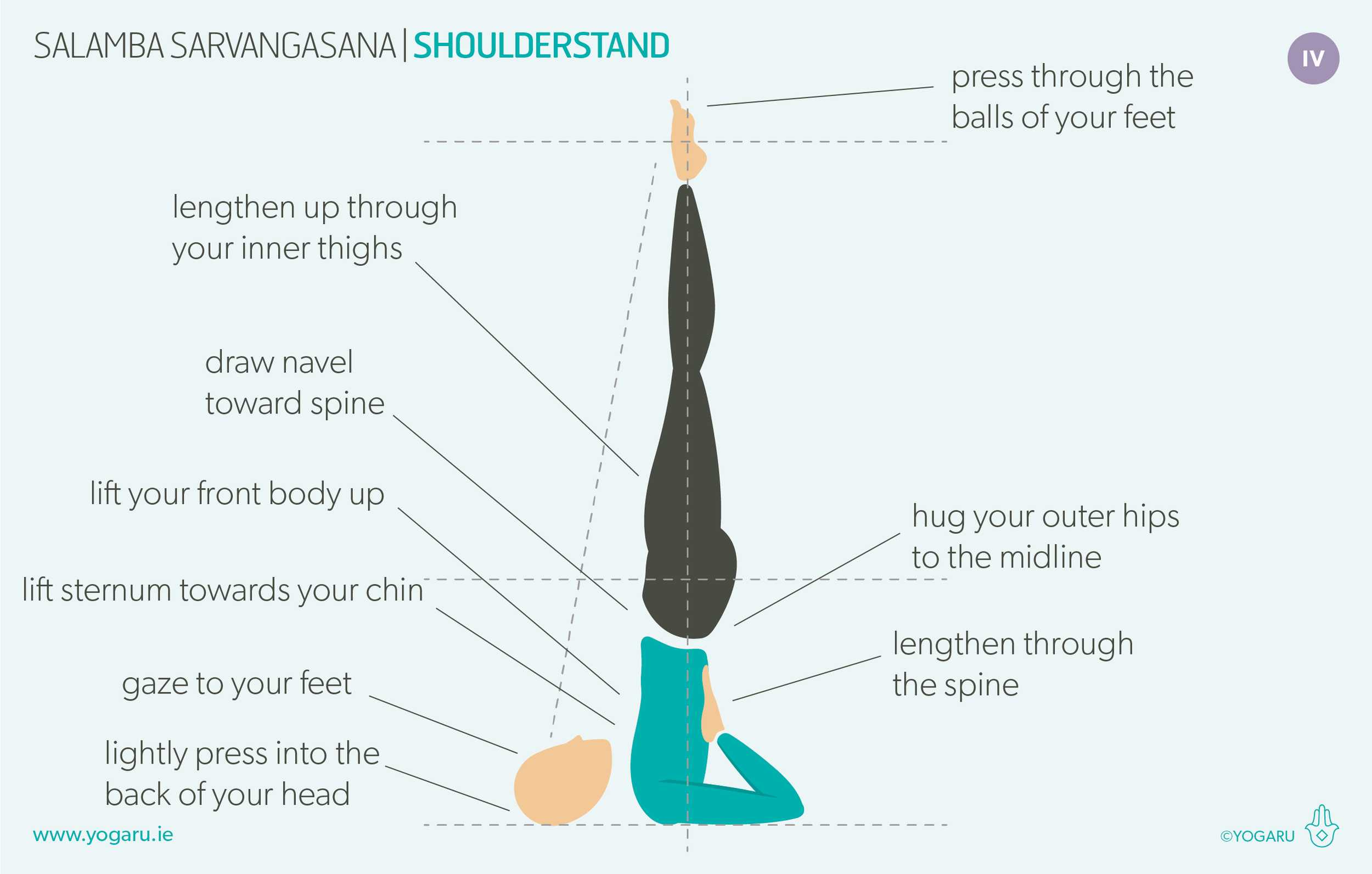ANIMAL MOVEMENT
Marjaryasana/Cat and Bitilasana/Cow go together like two peas in a pod and are perfect at any stage of your sequence to warm up, or ease out tension in the hips, spine and shoulders. I start off all of my own yoga practices and lots of my sequences with a few rounds of Cat & Cow. Even though they are often referred to as Cat & Cow it makes more sense to me to practice them as Cow first, with an inhale, and Marjaryasana/Cat after, with an exhale. In Bitilasana/Cow, when we inhale, the top of the pelvis tips down, the shoulder blades retract and draw together on the back, and the back of the shoulders reach towards the back of the hips. While in Marjaryasana/Cat, when we exhale, the pelvis tips up, the shoulder blades protract and spread apart on the back, and the front of the shoulders roll forward. All these opposites, in this simple two pose movement, make it a very good way to stretch and strengthen the hips, spine and shoulders joints. They are also very accessible with minimum scope for injury.
THE BENEFITS OF MARJARYASANA & BITILASANA - CAT & COW
Bitilasana/Cow strengthens the spine, and back of the shoulders, and stretches the front of the shoulders, chest, core and back of the hips. In Marjaryasana/Cat the opposite is happening – it stretches the spine, and back of the shoulders, and strengthens the front of the shoulders, chest, core and back of the hips. Bitilasana/Cow is a good prep for backbends while Bitilasana/Cow is a good prep for forward bends and poses like Bakasana/Crow. They are also very good poses for spinal health and massaging all the organs of the abdominal region. As we move from one pose to the other we are also linking the breath with movement, which is a valuable method for reduces stress and anxiety.
EXPLORING MARJARYASANA & BITILASANA - CAT & COW IN YOUR PRACTICE
Marjaryasana/Cat and Bitilasana/Cow can be added at pretty much any stage of your practice. You can even add it into other sequences to counterpose from a mini flow with lots of spinal, hip or shoulder work. In this sequence I have added them in as much as possible and added versions of Marjaryasana/Cat and Bitilasana/Cow to show how versatile they can be too. If you find your wrists are uncomfortable, place a rolled up blanket under the heels of your hands to reduce the angle at the wrist. If this doesn't relieve the discomfort, place your forearms on one or two bricks.
ALIGNMENT CUES
Below you will find the alignment cues for both Marjaryasana/Cat and Bitilasana/Cow. Even though these two poses partner together perfectly, take your time to get familiar with what you are looking for in each pose.
MARJARYASANA/CAT – EXHALE
From all fours, hips stacked over knees, shoulders stacked over wrists.
Exhale, arch your spine up, pelvis tips back, shoulder blades spread apart.
Press into all five knuckles of your hands, the tops of your feet and your knees.
Back of the neck long, gaze at the ground under your navel.
Inhale, into Bitilasana, repeat 5-10 rounds to warm up the spine.
BITILASANA/COW – INHALE
From all fours, hips stacked over knees, shoulders stacked over wrists.
Inhale, dip your navel down, pelvis tips forward, sit bones spread, broaden your collarbones, move your sternum forward and up, shoulder blades draw together.
Press into all five knuckles of your hands, the tops of your feet and your knees.
Back of the neck long, gaze forward to the front of your mat.
Exhale, into Marjaryasana, repeat 5-10 rounds to warm up the spine.
To save the images for personal use click and hold down the image until the ‘save image’ option appears; on Mac hold down ‘control’ and click the image to get the option box; on PC right click on the image to get the option box. Scroll down in the ‘option box’ and click ‘save image’.
Ruth Delahunty Yogaru






